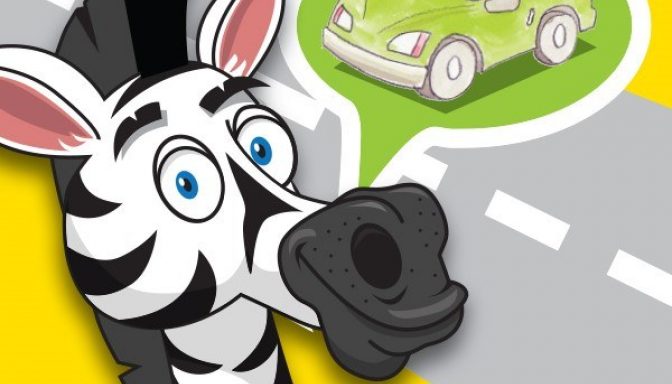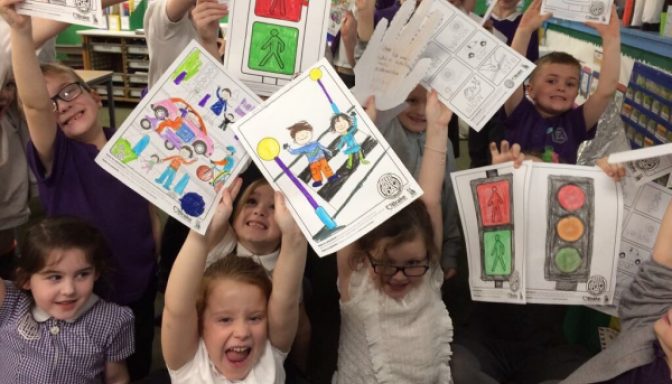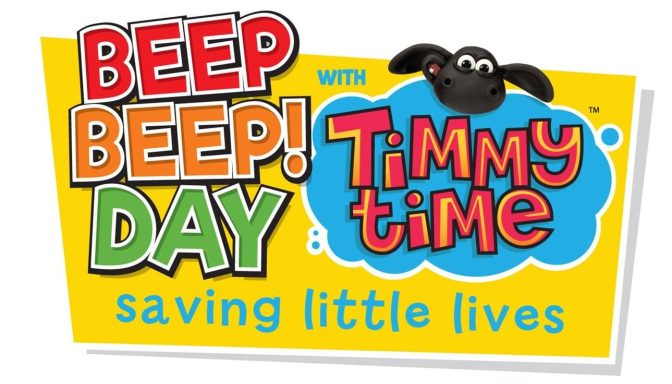When adapting lessons, be aware of pupils’ individual requirements and adapt lessons to fit their needs.
Use visual aids and sensory play to help pupils learn and understand the connection between road danger and their own safety. Focus on road safety basics, such as holding hands with a grown up when walking near roads, how to cross roads at safe crossing places and always wearing a seat belt/sitting in a child seat when travelling by car.
Brake's teaching resources are for children of all ages and abilities to learn about road safety.
The guidance on this page is focused on teaching safe walking and cycling to children below the age of 16 with SEND who are in mainstream education and taught alongside pupils who do not have SEND.
It can be adapted by special schools and special inclusive learning centres. It focuses mainly on working with children with speech, language and communication needs (SLCN), including children with autistic spectrum disorder, dyspraxia and dyslexia.
Many pupils with SLCN may get individual support from speech and language therapists, educational psychologists, or other professionals.
Here are some common strategies used to support pupils with SLCN in class:
Printed resources
- Adapt written resources using software such as ‘Communicate: In Print’, which uses symbols to replace text.
- Use additional resources such as physical props, multi-media, ICT, worksheets and diagrams to present and explore new concepts
- Ensure that presentation is clear and easy to follow.
- Highlight key words or phrases.
- Use short paragraphs.
- Use worksheets that get progressively more difficult as the number of tasks increases, to help pupils complete activities involving multiple or complex sequences.
Other tools to support teaching
- Use assistive technology to support pupils who find it difficult to demonstrate learning through writing.
- Video modelling lets the pupil use their voice to demonstrate and explain their learning.
- Use visual ‘now and next’ boards to show what is happening now and what will come next.
- For group activities, provide cards that show all the roles within the group; help pupils choose a role they can successfully carry out.
- Provide visual scaffolds, to show all the steps involved in completing a task.
- Include Social Stories - short descriptions of a particular situation, event or activity, which include specific information about what to expect in that situation and why.[i]
- Include multisensory learning (e.g. tracing over letters with shaving foam, finger painting letters, while saying the sound).
Make learning simple
- Break tasks into chunks and teach each part in a ‘mini-lesson’.
- Link mini-lessons with backward or forward chaining:- Backward chaining: The last step is taught first to give the pupil a sense of completing the task independently. Each step is then taught and mastered in reverse order.- Forward chaining: Each step in the process is taught in the chronological sequence.
- Identify and explain key words and concepts at the start of the lesson or at the start of a topic. Allow pupils time to independently research the topic before teaching begins.
- Provide an example of the completed task/outcome based on the learning objective.
- Use overlearning techniques – repeat the same content multiple times.
- Use colour-coded systems as visual reminders
Road danger
Research suggests that people with learning difficulties or disabilities are more at risk of being hurt or killed on roads [1]. UK casualty statistics don't record learning disabilities or difficulties among people injured or killed on roads, so it is difficult to assess the true extent of risk for children with SEND.
This page outlines how some of the different learning difficulties and disabilities affect children's safety on roads, and possible obstacles to teaching children with SEND about road safety. Whether or not individual pupils experience these problems may depend on the severity and nature of their learning difficulty or disability.
This information is intended only to illustrate additional
risks that may be experienced by children with SEND using roads. It is not intended as a complete list of
symptoms, behaviours and difficulties that may be displayed or
experienced by these children.
Click on the headings below to find out how children with different types of SEND are affected by road danger and different ways to teach road safety to them.
Children with ADD or ADHD may display any of the following:
- Hyperactivity, often running around excessively - meaning they may be more likely to: suddenly run out into the road; cycle too fast to control their bike properly; or undo their seatbelts, fidget and distract the driver when in a car.
- Impulsiveness and tendency to act without thinking - meaning they may be less likely to wait for a green man or until it's safe to cross, or to stay in line if a group is being taken off the school premises.
- Little regard for personal safety - often acting without fear or without considering the consequences, so may be more likely to run into the road or take chances with approaching traffic.
- Forgetful and easily distracted in the course of everyday activities - meaning they may be likely to become distracted while crossing the road or cycling, or simply forget to 'stop, look and listen' or apply other safety rules.
- A tendency to not listen to others or follow instructions - so even if being supervised, they may not listen to, or obey, safety instructions from an adult [2].
What to teach
- Create, and teach children to develop personal routines, based on children's actual behaviour, that they can use in their everyday lives to keep them safe. For example, if they are driven to school, develop a routine they can used to: get into the car; do up their seatbelt; check siblings are belted up too; play a game or activity on the journey so they don't distract the driver (e.g. see how many red cars they can spot); get out of the car on the pavement side; and walk into school safely. If they regularly walk to a local park or friend's house, create a routine for that journey, including spotting and avoiding hazards and choosing safe places to cross on the way.
- Use clear, reasonable and specific requests to teach safety rules. For
example: You should always stop and look and listen for traffic
before crossing any road. Only cross when you're sure there's nothing
coming. If you step into the road without looking and listening, a car
could hit you and hurt or even kill you.
- Set easily understood boundaries, to
define what is and isn't appropriate behaviour in terms of putting
yourself and others in danger. For example, ask the class to name things
they've seen people doing on roads that are safe or dangerous, putting
them into the two categories on the board. Then explain to the
class the possible outcomes of each action to demonstrate why each is
safe or dangerous.
- Use engaging teaching methods to create and maintain interest. Some pupils with ADHD may respond better to visual or movement-based teaching, rather than verbal communication alone.
- Use one-to-one communication, and remove disruptions or distractions where possible. It can be helpful sitting children with ADD or ADHD at the front of the class and engaging different pupils, including those with ADD or ADHD, individually in discussions about risk, taking care to relate it to their real lives [5].
Pupils with ASD may display any of the following:
- Difficulty thinking and behaving flexibly according to different situations, and a tendency to tie new skills to the circumstances in which they are taught - meaning they may not apply safety instructions or rules to every relevant situation. For example, a child taught to use the Green Cross Code when crossing a particular road may not automatically know to apply the code to crossing other roads.
- Difficulty understanding social contexts - meaning they may not respond to being taught about road safety in the context of what is 'right and wrong', or what is safe or dangerous. They may also find it difficult to apply these concepts to particular situations.
- Difficulty communicating with and understanding others - so may have difficulties understanding verbal instructions from adults supervising them on roads, and may be unable to communicate any difficulties they are having keeping themselves safe.
- Over or under-sensitivity to sights and sounds - this may put them at risk on roads by causing panic in reaction to certain noises or sights (due to over-sensitivity), and/or a lack of awareness of dangers like approaching traffic (due to under-sensitivity).
- Forgetful and easily distracted in the course of everyday activities - meaning they may be likely to become distracted while crossing the road or cycling, or simply forget to 'stop, look and listen' or apply other safety rules.
- Strong interests which can cause distractions - for example, they may have a strong interest in cars, which could cause them to walk into a road without looking to see a car they like.
What to teach
- Help children 'generalise' safety skills or rules, encouraging them to apply what they're taught to a range of situations when using roads. For example, teach that the Green Cross Code should be used when crossing any road, no matter what. Talk through different scenarios and settings (using pictures or toy people and cars or stories) asking children what they should do in each case, to demonstrate that the Green Cross Code should be used in each setting. Some of the settings could include pressures on the children to act dangerously or disobey the Green Cross Code, such as a friend calling to them from over the road, or being in a rush to get to school on time. It is also important to consider and highlight exceptions to rules, such as emergency service vehicles going through red lights.
- Use practical training, which is easier to generalise than class-room teaching, as it is based in a context that is closer to real life. If possible, provide this training on the routes that pupils actually use.
- Explain the importance of safety rules in literal terms, rather than by putting them into a social context of what's acceptable and what will be viewed favourably. For example, explain specifically that failing to follow safety rules can lead to death or serious injury, rather than talking about being 'good', 'sensible' or 'naughty'.
- Make sure your instructions are clear and complete. For example, the following could be misunderstood if taken literally, as it may be by a pupil with ASD: You should always stop and look and listen for traffic before crossing any road. If you don't, a car could hit you and hurt or even kill you. This could be understood to mean that as long as you stop, look and listen, you'll be safe. It misses out the step of 'Only cross if there are no vehicles coming.'
Children with dyspraxia may display any of the following:
- Co-ordination difficulties - meaning they may be at particular risk of stumbling or falling into the road while walking or swerving while cycling.
- Problems judging distance - this can make it difficult for children to judge how far away approaching traffic is and when it's safe to cross.
- Inability to tell left from right consistently - meaning they may find it difficult following the instructions of an adult supervisor when using roads, or obeying road markings telling pedestrians to 'look left' or 'look right'.
- Problems doing two things at once or completing complex tasks - meaning they may have difficulty following instructions for using roads safely that involve several actions, like the Green Cross Code [3].
What to teach
- Teach the dangers of taking chances - children with dyspraxia may have particular difficulty judging the distance between them and approaching traffic. However, it's important to teach all children that it's difficult for anyone (even adults) to judge the speed at which traffic is approaching. It's made even harder by many drivers breaking speed limits. Emphasise that children shouldn't cross unless they are certain the way is clear. Ideally, they should plan routes that make use of traffic-light controlled crossings or zebra crossings, although on the latter children should always wait until traffic has come to a complete stop. (If routes to your school don't have crossings, you can contact your local council to find out if they can be put in place.) To demonstrate the dangers of taking chances, and of crossing roads with fast traffic, you could measure out stopping distances of vehicles travelling at different speeds. You could also discuss dangerous things that some drivers do that mean they might not be able to spot a child in the road (e.g. speeding, talking on a mobile, driving while tired or drunk) and why the children think drivers take these risks.
- Teach the dangers of staying well away from traffic, especially fast traffic.Children with dyspraxia may be at particular risk of stumbling into the road. This is particularly dangerous on faster roads, where drivers are less likely to be able to stop in time. It's important to teach all children the importance of using safe routes where they are available, particularly footpaths that are set away from traffic, and routes that make use of crossings and avoid fast roads. You could also work with the children to draw a big map of the area, plotting safe routes to and from the school and linking homes to local amenities.
- Help children develop strategies for telling left from right. Many children may have difficulty telling left from right so it may be a useful exercise to get all pupils to come up with their own ideas for ways of remembering left from right, such as wearing different coloured gloves or shoelaces (red representing right), holding up their forefingers and thumbs at right-angles to see which hand spells 'L', or visualising which hands they hold their knife and fork in. Encourage pupils to stop and think about which is which before following an instruction, and to check with an adult or friend if they're not sure.
- Communicate your teaching to specialists working with pupils. Children with dyspraxia may be seeing specialists to help develop certain skills, particularly the physical movements involved in daily tasks. If possible, get in touch with these specialists (via pupils' families) to tell them about the road safety lessons you're running, and to help them reinforce your teaching and incorporate road safety into their sessions. For example, specialists may be able to run exercises to help children carry out the physical actions needed to cross a road safely.
Children with dyslexia may display any of the following:
- Difficulties reading - this may cause problems reading any written instructions or advice on using roads safely, including road signs and markings.
- Difficulties following a series of instructions in order - so may have difficulties following instructions from an adult supervisor when using roads, or applying a series of actions in order, like the Green Cross Code.
- Problems with directional words like left/right and up/down - so may find it difficult following the instructions of an adult supervisor when using roads, or obey signs that tell you to 'look left' or 'look right' [4].
What to teach
- Use practical training, role play, diagrams and other visual aids to demonstrate how to make safe choices on roads. Children with dyslexia may find these more memorable and easier to understand than written rules. For example, get children to act out different scenes involving them experiencing pressures to use act dangerously. They could act out two alternative endings for each scene - one where they act safely and one where they act dangerously.
- Help children develop strategies for telling left from right (as above, under dyspraxia).



